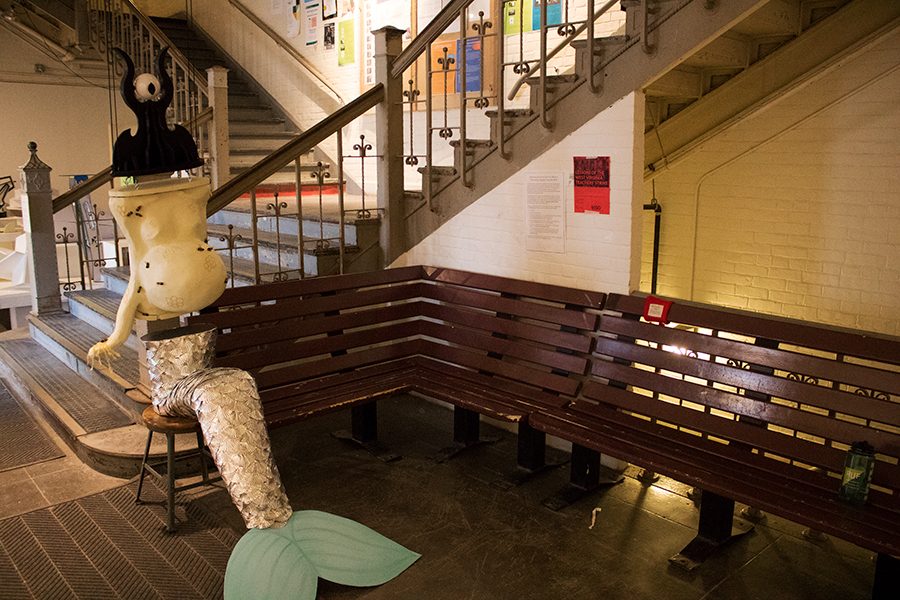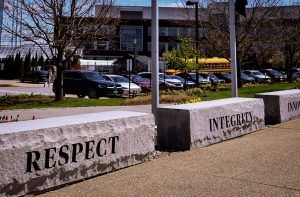More than brick: Williams Hall
A sculpture sits atop a group of art departement lockers in the basement of Williams Hall. The building has become home to university’s art and anthropology departments. Sophomore studio art major “It’s literally a place where people come and express themselves and it’s not cut and dry like the new Discovery building, it’s not sterile. It’s history, it’s living with all of this art.”
April 10, 2018
The Gothic, red-brick architecture of Williams Hall hangs over University Green, establishing the scene of the traditional New England college.
While Williams Hall is a familiar sight by many UVM students and faculty, its interior is less known.
“When I saw Williams, I was like, ‘I’ve arrived. I work in the college building that I dreamed of working in,’” said Emily Manetta, chair of the anthropology department.
Despite being built in 1896 to provide space for science education, the art and anthropology communities now call Williams a home of their own, according to the University website.
“Williams is my favorite place on campus, hands down,” said sophomore Aleda Kirstein, a studio art major. “So many of the studio classrooms are art themselves. The floors are splattered and then varnished over, so everything has this thick layer of paint that adds a vibrancy.”
Kirstein spends lots of time in Williams, and has had the opportunity to explore and appreciate the building.
“It’s like a canvas. There’s paint everywhere. There’s writing everywhere,” Kirstein said. “It’s not cut and dry like the new Discovery Hall. It’s not sterile. It’s history; it’s living with all of this art.”
Manetta said every day in Williams is unique.
“Coming up the stairs every day it’s like, ‘I’m in a different gallery.’ I never know what I’m going to see on the wall, what’s gonna change,” she said.
A student walking out of a class in Williams is likely to see an array of masks hanging on a wall by a staircase, an installation of sculptures and photographs by student artists and a string of fairy lights taped to the arch over Williams’ lecture hall.
Another aspect of the art community in Williams is the Francis Colburn Gallery.
“It’s a free, open, public gallery on campus that occasionally exhibits student art,” said senior Thomas Mackell, an intern who is interning at the gallery.
A poetry reading was hosted there March 26. “I was really blown away by a lot of the work that was read. Some really powerful stuff, but also just some really funny stuff,” Mackell said.
Though Williams may have been built for science, artists and anthropologists have latched onto one of UVM’s most historic and adored buildings, making it their own.








